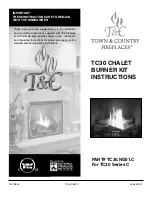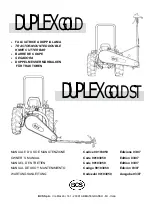
WARNING!
•
Laser radiation. Avoid direct eye contact. Avoid exposure to beam.
•
Avoid exposure. Laser radiation is emitted from the aperture.
•
Using controls, making adjustments, or performing procedures other
than specified herein may result in hazardous radiation exposure.
1.4
Class 3B (IIIb) laser safety information
What is a Class 3B Laser?
Class 3B lasers are hazardous for eye exposure.
They can heat skin and
materials, but are not considered a burn hazard. For visible-light lasers, Class
3B lasers’ output power is between 5 and 499 milliwatts.
Note
The Emerson 430’s output power is <5mW. The IEC identifies the laser as
class 3B due to the duration of time the laser can be exposed during
operation.
Safe Use Guidelines
A Class 3B laser can cause eye injury.
The more powerful the laser, the
greater the chance of injury.
Use of laser protective eyewear is suggested or recommended.
A Class 3B laser can be a distraction, and are a glare or flash blindness hazard
for users and coworkers.
Always be aware of the beam location.
Keep it away from eyes and heads.
Watch out for reflected beams from glass and shiny surfaces.
ONLY ALLOW USE BY TRAINED/RESPONSIBLE PERSONS.
Class 3B Laser eye injury hazards
Class 3B visible-light lasers are hazardous for eye exposure. They can cause
burns to the retina. A person cannot turn away or blink fast enough to
prevent retinal eye injury from a nearby Class 3B laser.
At the low end, around 5 to 50 milliwatts, a Class 3B laser poses a moderate
risk of eye injury. It is unlikely that a handheld beam aimed from more than a
few dozen feet away would cause injury—laser light could not stay on one
spot on the retina long enough for heat to build up to injurious levels.
However, the risk is increased if the beam is held steady or if the laser is
relatively close to the eye.
August 2018
User Guide
7








































